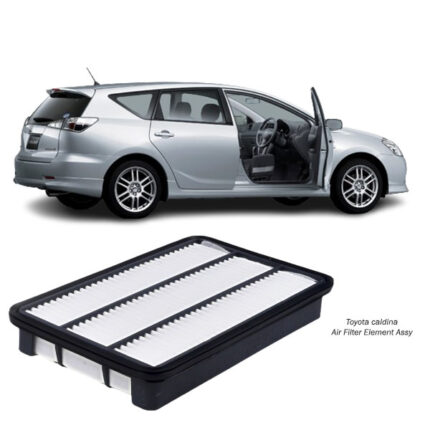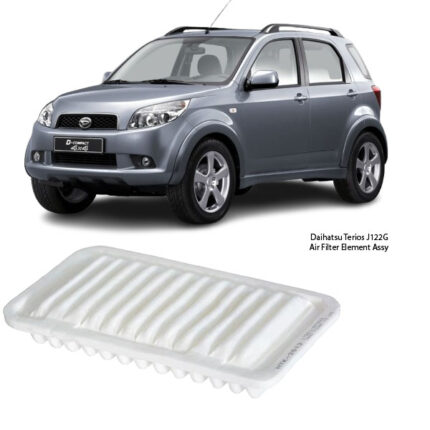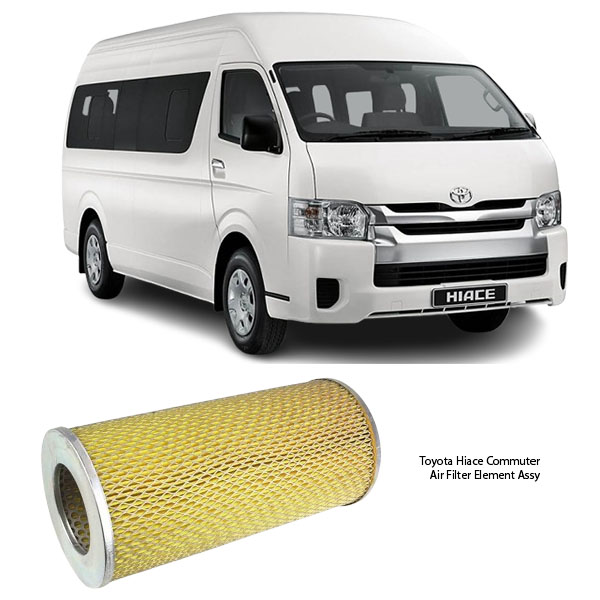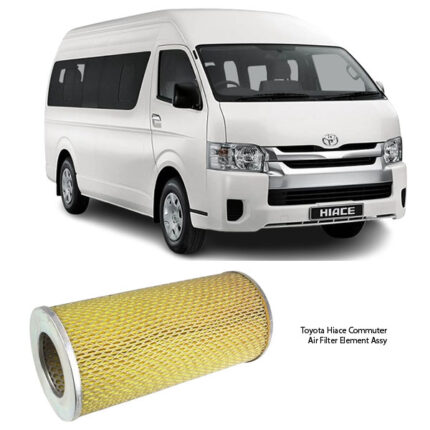Get Toyota Hiace Commuter Air Filter Element Assy 17801-75010 in Kenya
The Air Filter Element Assembly is a fundamental component of a vehicle’s engine intake system. Its primary job is to clean the air that enters the engine by trapping dust, dirt, debris, pollen, and other airborne contaminants. Clean air is essential for efficient combustion, and without an effective air filter, an engine is vulnerable to internal damage, reduced efficiency, and higher emissions.
Although often overlooked, the air filter element plays a silent but critical role in ensuring engine performance, fuel economy, and long-term durability.
What Is an Air Filter Element Assembly?
An Air Filter Element Assembly is the complete air filtration unit, usually composed of the following:
-
Air Filter Element – The actual filter material (usually pleated paper, foam, or cotton) that traps contaminants.
-
Frame and Seal – Keeps the filter element in place and prevents unfiltered air from bypassing the filter.
-
Air Filter Housing (in some cases) – The plastic or metal box that encases the filter element and connects to the intake ducting.
The air filter is usually mounted inside an air box in the engine bay. Air from the outside environment is drawn through the air intake duct into the filter housing, passes through the filter media, and then enters the engine’s intake manifold.
Purpose and Function
The primary function of the air filter element is to ensure that only clean, debris-free air reaches the engine. This clean air is then mixed with fuel and ignited in the combustion chamber to power the vehicle. The filter must balance two key requirements:
-
High filtration efficiency – Capture as many airborne contaminants as possible.
-
Low airflow restriction – Allow adequate airflow to maintain engine performance.
By effectively filtering the air, the air filter prevents premature wear of internal engine components like the pistons, cylinder walls, and valves, which could otherwise be damaged by abrasive dust and particles.
Types of Air Filter Media
-
Paper Air Filters
-
Most common and cost-effective
-
Pleated to increase surface area
-
Disposable and replaced at intervals
-
-
Foam Air Filters
-
Often used in off-road or dusty environments
-
Can be washed and reused (if designed for it)
-
-
Cotton Gauze Filters
-
Reusable and high-performance
-
Common in aftermarket performance applications
-
-
Synthetic Air Filters
-
Designed for long life and better airflow
-
Offer consistent performance even in humid or wet conditions
-
Advantages of a Good Air Filter Element Assembly
-
Enhanced Engine Performance
A clean air filter ensures the engine gets an optimal air-fuel mixture, which results in better throttle response, power delivery, and smoother operation. -
Improved Fuel Efficiency
With unrestricted airflow, the engine burns fuel more efficiently, improving mileage. -
Reduced Engine Wear
By blocking harmful particles, the air filter protects vital engine components from abrasive damage. -
Lower Emissions
Efficient combustion due to clean air results in fewer unburnt hydrocarbons and pollutants in the exhaust. -
Extended Engine Life
Consistent use of quality air filters helps prolong engine life by maintaining internal cleanliness. -
Better Air Quality Inside the Engine
High-quality filters can also reduce the amount of oil vapor or contaminants that might be reintroduced via the engine’s crankcase ventilation system.
Disadvantages of a Worn or Poor-Quality Air Filter
-
Restricted Airflow
A clogged filter limits the amount of air entering the engine, leading to poor combustion and sluggish performance. -
Reduced Fuel Economy
An overly dirty or restrictive filter causes the engine to run rich (too much fuel, not enough air), wasting fuel. -
Engine Misfires or Rough Idling
Inconsistent airflow can lead to uneven combustion, resulting in engine misfires or unstable idling. -
Increased Emissions
Poor filtration leads to inefficient burning of fuel, increasing carbon monoxide and hydrocarbon output. -
Risk of Engine Damage
Dirt and debris entering through a compromised filter can cause internal scoring, leading to costly repairs.
Symptoms of a Dirty or Failing Air Filter
-
Decreased Acceleration
The vehicle may feel sluggish or unresponsive due to restricted airflow. -
Unusual Engine Noises
Whistling or popping sounds from the intake system can indicate airflow blockage. -
Dark or Black Smoke from Exhaust
Caused by a rich air-fuel mixture due to inadequate air intake. -
Check Engine Light
In some vehicles, airflow issues can trigger diagnostic trouble codes related to fuel trim or MAF (Mass Air Flow) sensor readings. -
Dirty Appearance
A visual inspection may reveal dust, leaves, or dirt buildup in the filter pleats. -
Poor Fuel Economy
Frequent refueling may signal the engine is consuming more fuel to compensate for restricted airflow.
When to Replace the Air Filter Element
-
Manufacturer Recommendations
Typically every 15,000 to 30,000 kilometers, depending on driving conditions. -
Driving Environment
Vehicles operating in dusty or sandy conditions (like construction areas or rural roads) may require more frequent replacements. -
Inspection-Based
If the filter appears dark or loaded with debris, replacement is advisable even if it’s before the interval.
How to Replace an Air Filter Element Assembly
Tools Required:
-
Screwdriver or ratchet (if housing is clipped or bolted)
-
New air filter element
Steps:
-
Turn Off the Engine
Allow the engine to cool down before accessing the air filter housing. -
Locate the Air Filter Housing
Usually found on one side of the engine bay, connected to the intake duct. -
Open the Housing
Release clips or remove bolts securing the housing cover. -
Remove Old Filter
Lift the old filter element out of the housing carefully to avoid spilling trapped debris. -
Clean the Housing
Wipe the interior with a clean cloth to remove dust and debris. -
Insert New Filter
Place the new filter in the same orientation as the old one. Ensure it seals properly around the edges. -
Secure the Housing
Close the cover and fasten all clips or bolts securely.
Maintenance Tips
-
Inspect during every oil change for buildup or damage.
-
Avoid over-oiling reusable filters, which can damage airflow sensors.
-
Check for proper sealing—unfiltered air bypassing the filter can damage the engine.
-
Monitor for rodent or insect intrusion—especially if the car has been idle for long periods.
Follow us on Facebook for more parts.




